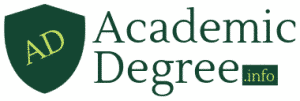If you’re captivated by color schemes, textures, and space planning, becoming an interior designer might be your calling. This creative profession requires a fusion of style, functionality, and an eye for detail to transform any area into a cohesive and aesthetically pleasing space.
To navigate the journey towards this rewarding career, it’s essential to grasp the educational and experiential steps involved. From choosing the right education to building a compelling portfolio, here’s everything you need to know about how to become an interior designer.
Table of Contents
How long does it take to become an interior designer?
The timeline to become an interior designer can vary based on the educational path one chooses. Typically, earning a bachelor’s degree in interior design takes about four years. However, if you’re looking to fast-track your entry into the field, an associate’s degree can be completed in two years, with the understanding that you may still need to meet additional experience requirements or pursue further certification.
After completing formal education, the NCIDQ exam is a common next step, which requires two years of professional experience. So, in total, you might be looking at six years to fully establish yourself as a certified interior designer.
It’s important to note that some states mandate licensure to practice interior design. This often requires a combination of education and experience, so be sure to check your local regulations.
Is attending design school a must?
While talent is vital, formal education can equip you with the technical skills and knowledge base that are essential in today’s industry. Design schools offer accredited programs that dive deep into subjects like space planning, materials, and building codes, which are critical for success.
Moreover, attending an accredited design school can streamline the process of becoming certified, as many programs meet the educational requirements for taking the NCIDQ exam.
However, for those with an innate sense of design and experience in a related field, there are non-conventional paths available, which might involve self-study or mentorship opportunities.
What design school is right for you?
When selecting a design school, consider factors such as accreditation by the Council for Interior Design Accreditation, program curriculum, faculty experience, and the school’s alumni network. These aspects can greatly influence your education and future opportunities.
Visiting schools, talking to current students and alumni, and reviewing the works of graduates can provide insight into the program’s effectiveness and whether it aligns with your career aspirations.
It’s also beneficial to consider the school’s location, as proximity to design hubs can offer valuable internship and networking opportunities.
How to get a leg up in the interior design industry?
Gaining a competitive edge in the interior design industry is about more than just education. Securing internships, participating in design competitions, and networking can all play significant roles in establishing your career.
Joining professional organizations, attending industry events, and staying current with design trends are also strategic moves for aspiring designers.
Remember, continuous learning and adapting to new technologies and design methodologies are integral to staying relevant and successful in this dynamic field.
How to become an interior designer without a degree?
Becoming an interior designer without a formal degree can be challenging, but it’s not impossible. Building a strong portfolio to showcase your work, seeking mentorships, and gaining experience through hands-on projects or apprenticeships can prove your skills to potential clients or employers.
Additionally, there are many online courses and resources available for those looking to self-educate. While certification may be more difficult to attain without a degree, demonstrating your expertise through your work can help bridge that gap.
What education is needed to become an interior designer?
Most interior design positions require at least a bachelor’s degree, ideally from an accredited institution. Coursework typically includes color theory, drawing, space planning, computer-aided design (CAD), and understanding building codes and systems.
Beyond a bachelor’s degree, many designers continue their education through specialized certifications or master’s programs, particularly if they’re interested in niche areas of design or assuming leadership roles within large firms.
How to become an interior designer with no experience?
Starting a career in interior design with no experience may seem daunting, but there are several approaches to break into the field:
- Enroll in design courses or workshops to build foundational skills.
- Create mock design projects for an evolving portfolio.
- Network with professionals in the industry through social media and design events.
- Offer to assist friends or non-profits with design projects to gain practical experience.
- Seek entry-level positions or internships in design-related firms.
Each of these steps serves to build your skills, credibility, and connections within the industry.
Related questions on becoming an interior designer
What qualifications do I need to be an interior designer?
Qualifications typically include a bachelor’s degree in interior design or a related field, coupled with professional experience. Certification, such as passing the NCIDQ exam, can also be a requirement, depending on your location and career goals.
Developing a combination of creative, technical, and business skills can significantly enhance your qualifications as an interior designer.
How do you get started as an interior designer?
To get started, focus on education and building a portfolio. Engage in networking, consider internships, and be proactive in learning industry-standard software and design trends.
Setting clear career goals and working towards them systematically can help pave the way for a successful start in the interior design industry.
Can you be a self-taught interior designer?
Yes, it is possible to be a self-taught interior designer. However, it requires dedication to self-study, a strong portfolio, and often, significant networking efforts to establish credibility without formal education.
Taking advantage of online courses, tutorials, and participating in design communities can support self-directed learning.
How many years does it take to be an interior designer?
It typically takes four years to earn a bachelor’s degree, plus additional time for gaining professional experience required for certification. So, you might expect to invest six to seven years to become a fully qualified interior designer.
Career progression can continue beyond this with specialized certifications or advanced degrees for those seeking to deepen their expertise.
The journey to becoming an interior designer is filled with opportunities for creativity and growth. By committing to the necessary steps of education, certification, and hands-on experience, you’ll be well on your way to making your mark in the world of interior design.









